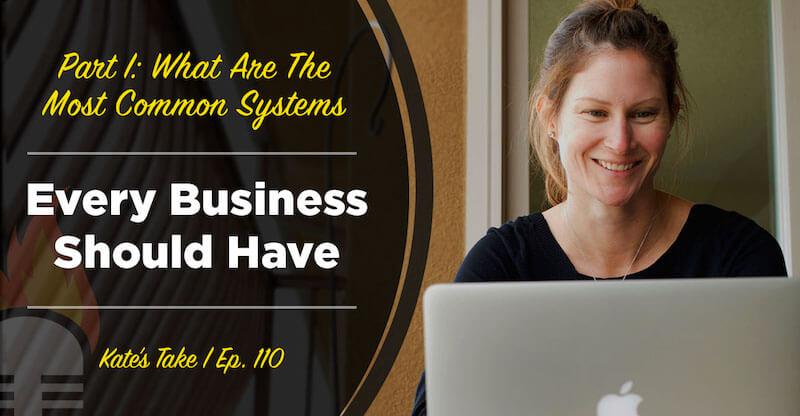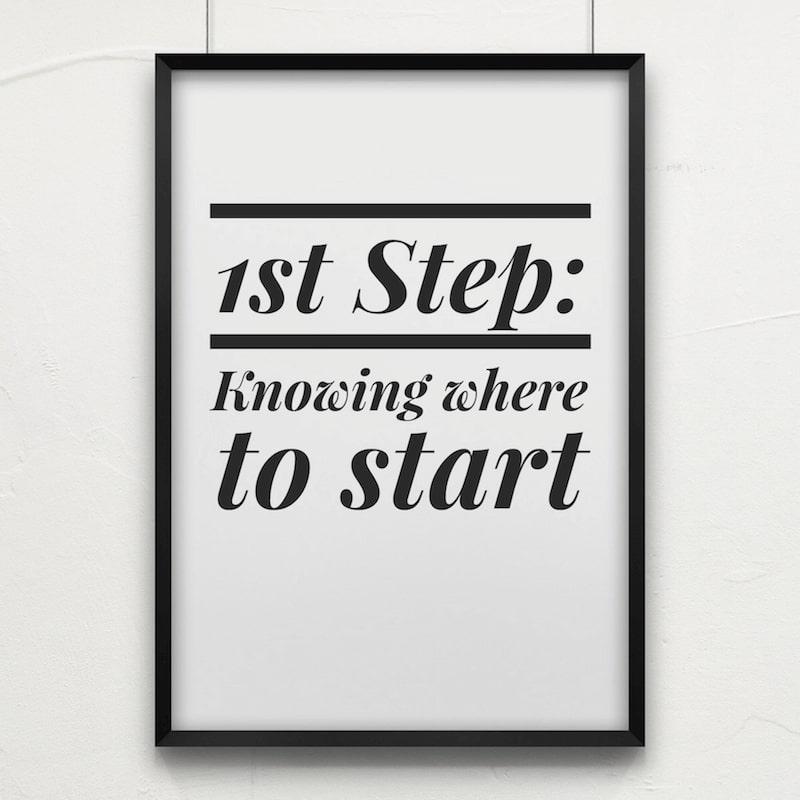
A lot of times what holds us back from taking action is not knowing where to start.
I know I have a lot of projects that I really want to start, but it takes me a while to focus my time and energy on figuring out where to start.
A project can’t be tackled from the middle. Each has a start, middle and end.
I have a feeling that may be why so many entrepreneurs and small business owners don’t have systems in place.
Knowing where to start
They understand the benefit – they can see how they work, and if they read the EOFire blog or listen to Kate’s Take, they know exactly how to create them ;)
But once you know how to create them, you still need a place to START.
You can’t create 10 systems at once.
That’s why I’m writing this post. I want to share a few of the most common systems every business should have – to give you a place to start.
I’m going to go big-picture here; I’m not going to talk about the several processes that might live under each of these systems in detail. But we’ll get there – we’ll be diving into each of these systems individually in future posts here on the blog and on Kate’s Take.
Make sure you get every one of these posts – straight to your inbox!
Alright, let’s dive in to some of the most common systems every business should have so you have a place to start for your business…
System #1: Setting SMART goals
Goal-setting, looking ahead, creating a business plan – whatever you want to call it, every business should have a system around “how we’re going to do business this year“.
Setting SMART (Specific Measurable Attainable Relevant Time-bound) goals is so important because everything you do in your business should be contributing to getting you one step closer to the goals you’ve set.
Having SMART goals will help you decide:
- When to stop digging if something isn’t working
- When to double down if something is working
- What to FOCUS on when you have a lot of projects begging for your attention
- Whether or not to say “yes” to the great new opportunity
Pretty big decision points in your business, wouldn’t you say?
YES.
If you don’t have SMART goals, every time you question whether or not something is working, worth doing, or should be “next” on your priority list, you’re going to waste a ton of time trying to figure it out.
A System for Setting SMART Goals
Here’s what a system for setting SMART goals might look like:
- Make sure you have a vision and mission for your business written out;
- Think about what you’d like to accomplish this year in your business, given your vision and mission (in other words, what actions will help you get closer to achieving your vision and mission through your business?);
- Pin point 4-5 BIG goals you want to set for the year and actually write them down;
- Now, make each of them SMART goals (again, write it out on paper so you have it down);
- Review them, and maybe share them with a mastermind or your mentor to make sure you’re not selling yourself short;
- Keep them some place where you can refer to them frequently;
- Check in with yourself every month or so to make sure you’re on track for accomplishing your goals in the time frame you specified.
System #2: Content
Regardless of the medium you choose to use in order to distribute your content to your audience, every business has some type of content, and it’s typically a huge chunk of the work you do – as it should be.
Without your content, how are you going to grow an audience?
Your content system might start out with 1 major focus, but as your business grows you will start to take on several mediums in order to gain momentum and traction, and also gain exposure for your business.
The good news is that once you have a system down for 1 type of content / medium, it’s going to be a lot easier to “re-purpose” that system for any type of content / medium you decide to add to the mix.
A System for Content
Here’s what a system for content might look like:
- Start by simply choosing the content and medium you’re going to start with (written content on a blog, or audio content through a podcast are a couple of examples – this should be based on what you think your avatar wants / needs);
- Set time aside to determine the format of your content (again, keeping in mind what it is your avatar wants / needs);
- Once you have the format down, commit to being consistent: what frequency will you go with? (…keep your avatar in mind);
- Determine any repurposing opportunities (it’s good to identify these up front, because it’s much easier to develop a process around publishing something on multiple platforms than it is going back and having to recreate content in batches);
- Based on your frequency, set specific day(s) and time(s) you’ll prepare your content and stick to that schedule;
- Make sure you’re reviewing any stats or milestones you’re accomplishing based on your SMART goal for your content, and readjust if needed.
Just Start
A lot of times what holds us back from taking action is not knowing where to start, but remember: a project can’t be tackled from the middle.
I hope the outline I’ve covered here for a few of the most common systems every business should have gives you a solid place to start.
Perhaps your systems will look different than the ones above – and that’s okay. The point where you get to find out what setting SMART goals for your business looks like – or what your content system looks like – is when you start creating it.
Start today.

